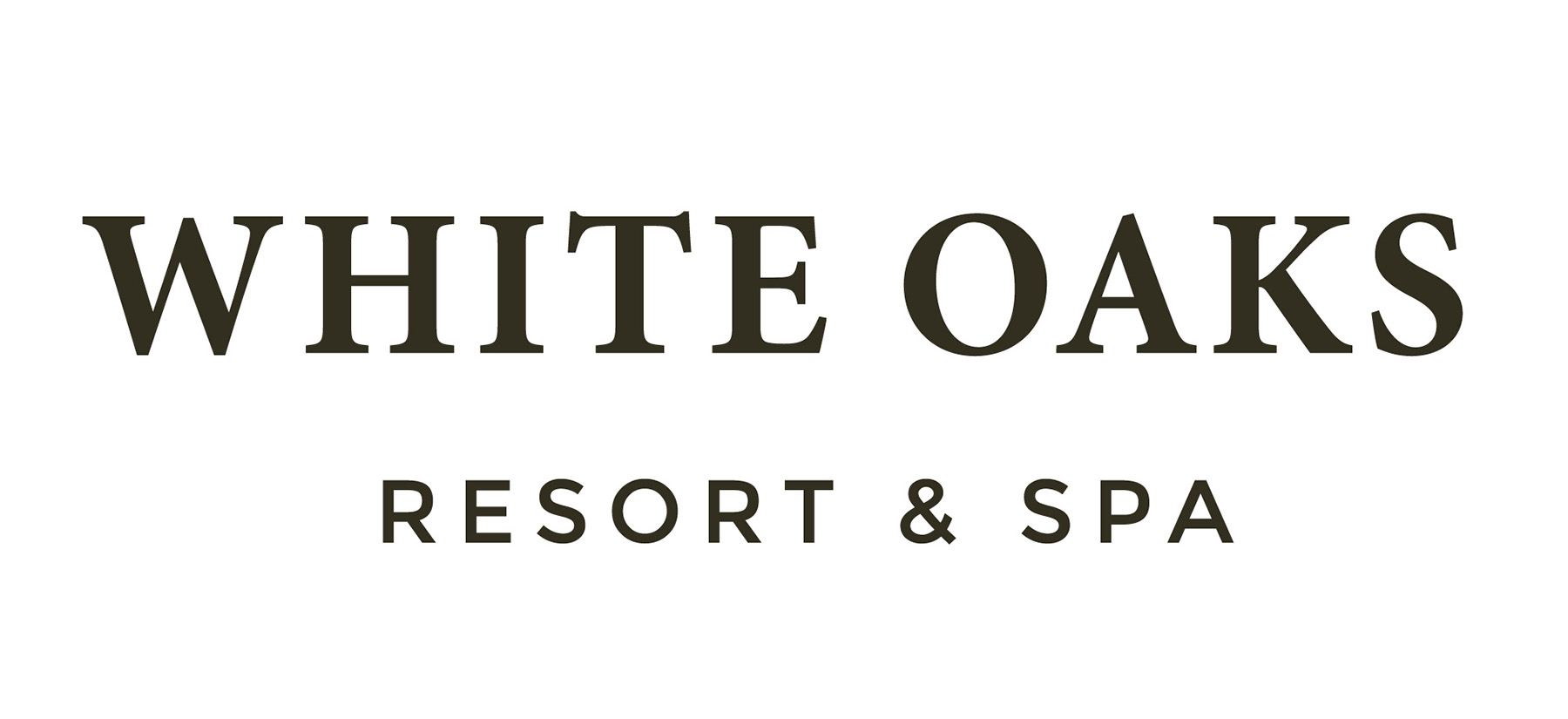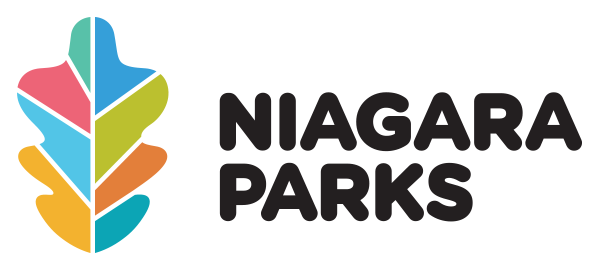The Foreign Affair Winery
Maenad Wine Company
Dobbin Estate Vineyard
Rosewood Winery & Meadery
The Organized Crime Winery
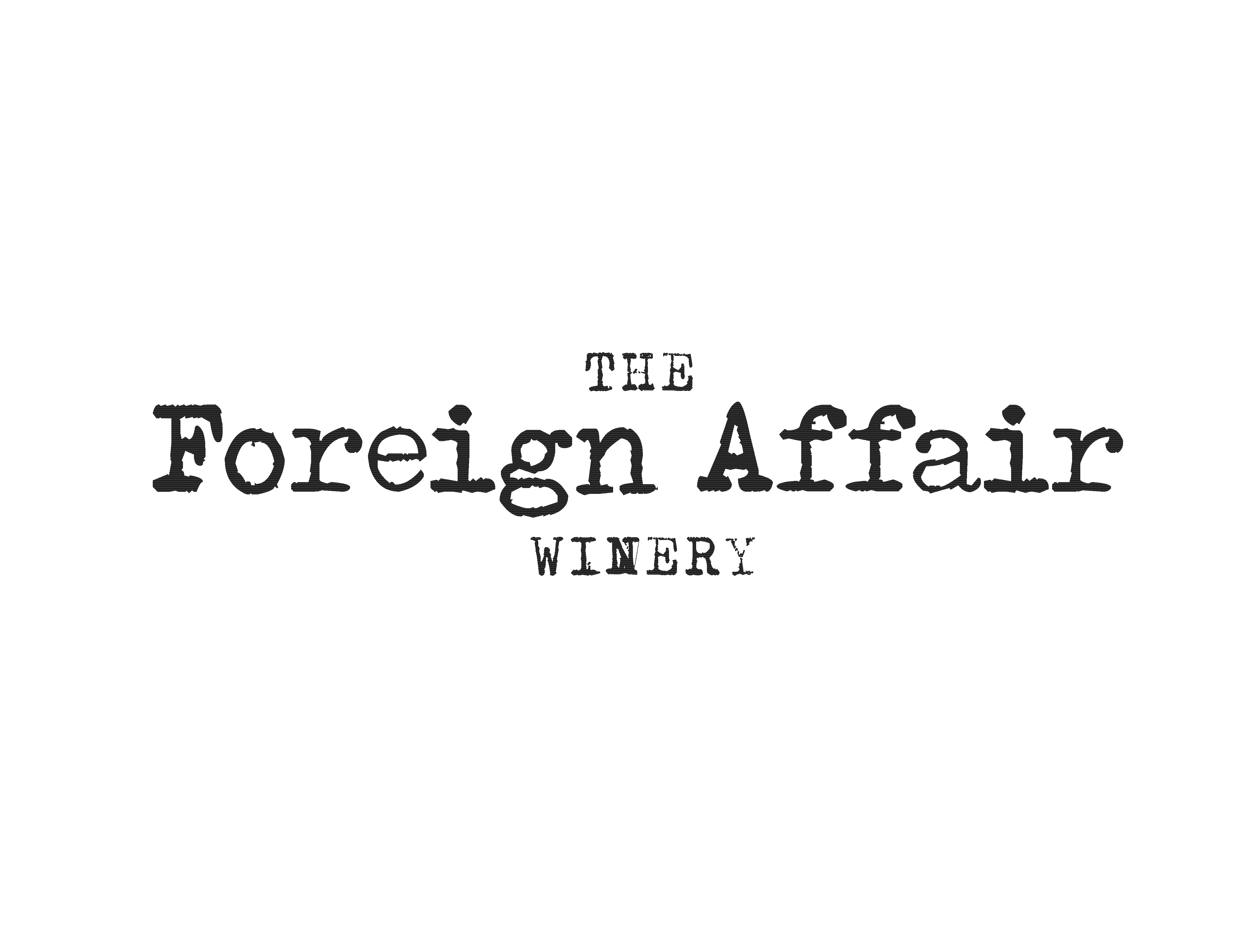
The Foreign Affair Winery
Niagara Escarpment, Canada

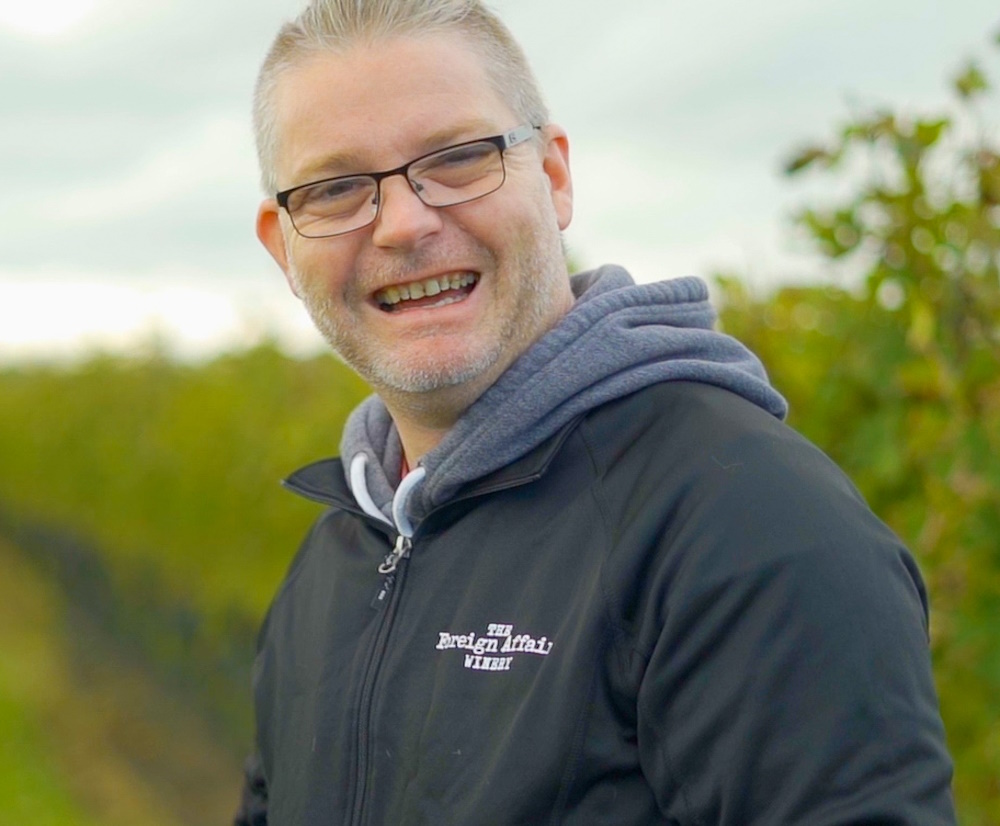
About The Foreign Affair Winery
Nestled within the heart of the Niagara Benchlands, The Foreign Affair Winery embodies a journey inspired by passion and tradition. Founded in 2008 by Len & Marisa Crispino, who were captivated by the allure of appassimento-style wines during their time in Italy, our winery has been a testament to their vision and love for winemaking.
Guided by a commitment to quality and innovation, our winemaker, Rene Van Ede, has meticulously crafted a portfolio that showcases the artistry of appassimento red wines, exquisite sparkling wines, and refined white wines.
In 2017, our legacy was embraced by Corby Spirit & Wine, yet we remain dedicated to preserving the essence of Len & Marisa's legacy, crafting unforgettable experiences and extending heartfelt hospitality to all who visit.
Representative Biography
René Van Ede, Winemaker
René Van Ede is a distinguished winemaker whose passion for wine was ignited while working in hospitality in the United Kingdom. Originally from the vicinity of Australia’s Hunter Valley wine region, René decided to pursue winemaking as a profession. He returned to Australia to earn his Bachelor of Wine Science from Charles Sturt University.
After gaining experience with a few vintages in Australia, René’s journey took him to Canada, where he joined the Tawse winery team in 2006. By 2007, he had become a permanent and integral part of the Tawse award-winning winemaking team. His expertise and dedication have contributed significantly to the winery’s success and reputation in producing organic and biodynamic wines in the Niagara region.
René’s career is a testament to his commitment to quality and his ability to craft wines that reflect the unique characteristics of their terroir.
René joined The Foreign Affair Winery in March 2020, bringing with him a wealth of experience from his previous role as Winemaker at Tawse & Redstone Winery. As a respected figure in the Niagara wine country, René is deeply passionate about showcasing the potential of Niagara’s fruit and is committed to producing high-quality wines.
At The Foreign Affair Winery, René is part of a team that is pioneering the use of the appassimento winemaking technique in Canada. This old-world style, known for producing Amarone wines in Italy, involves partially drying grapes to concentrate their flavours before fermentation. The result is bold, full-flavoured red wines and elegant white wines that have garnered attention and awards for the winery.
René’s expertise and dedication to the craft are evident in the winery’s diverse selection of wines, of which some are touched by the appassimento process. His approach aligns with the winery’s vision of blending Italian heritage with Canadian roots, creating a unique and memorable wine experience.
Why We're Cool
Our Crispino Vineyard in Vinemont Ridge is characterized by its south-facing slope, which benefits from early spring warming and hot summers, allowing grapes to reach full maturity by harvest. The soils are rich in clay loam till with a high water-holding capacity, ensuring a consistent water supply throughout the summer.
The soils of our Lincoln Lakeshore vineyards are diverse, with light sandy soils that warm early in the spring and heavier red clay loam that retains water well. This variability contributes to the complexity and character of our Chardonnay wines produced. The Chardonnay from our Lincoln Lakeshore are often noted for their floral honeyed notes, ripe fruits, and intense aromas.
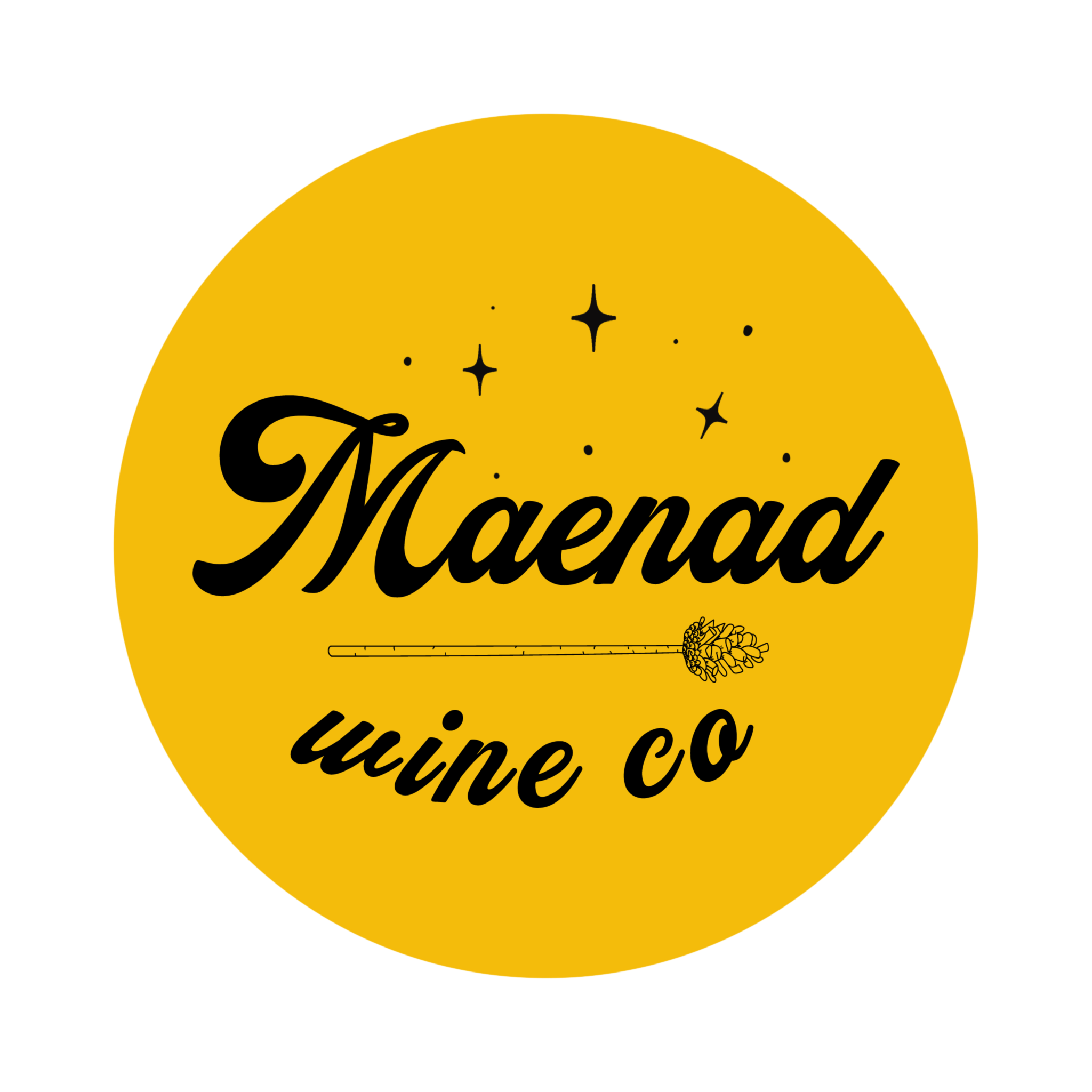
Maenad Wine Company
Ontario, Canada

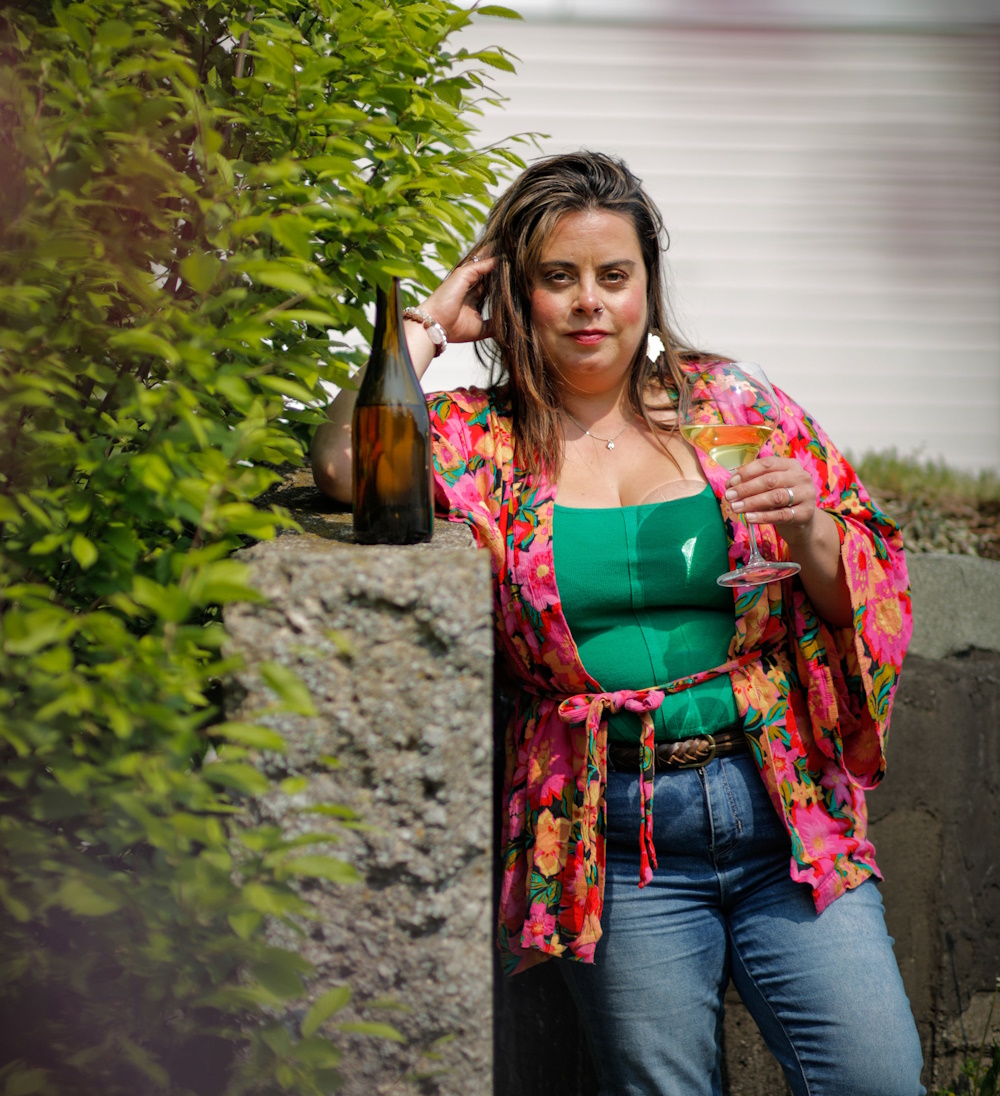
About Maenad Wine Company
Maenad Wine Co. Is a virtual winery that celebrates all women as they are. Maenads were the followers of the Greek god of wine Dionysus and were known for their wild behaviour, strength, and defying the expected roles of women. We use them as our muse for the creation of our unique wines and beverages, making styles that are creative, unfiltered, imaginative and wildly delicious! Wines and women, untamed!
Since Maenad Wine Co is a virtual winery, we have no physical location of our own. Our wines our sold through Drink Collab - a collective group of winemakers making a wide variety of wines and beverages. We have the gift of being able to source small lots of fruit from various vineyards all across the Niagara Peninsula. This offers us the chance to really explore the variety of microclimates and terroirs throughout the region.
Representative Biography
Yvonne Irvine, Winemaker & Co-owner
Yvonne Irvine has been making wine in Niagara for 17 years. In an effort to find her true calling she studied Biotechnology and then Business - Human Resources before finally finding her passion for winemaking and completing the Winery Technician program at Niagara College. She found winemaking to be the perfect combination of art and science and has spent years honing her craft and learning from some of the region’s top winemakers. One of her main focuses in the past decade has been making Chardonnay for two other wineries in Niagara. In 2020 she decided to start her own company - Maenad Wine Co., making wines that are creative and push boundaries while showcasing the natural terroir of the places they come from. She is the mother of two wonderful children, a two-time barrel rolling champ and can often be found dancing in vineyards or indulging in bougie picnics. Her favourite thing about Chardonnay is texture! The mouthfeel and structure can be shaped differently based on winemaking techniques and terroir and is a really interesting element to focus on and enjoy.
Why We're Cool
Our philosophy with Chardonnay is to respect the terroir, intervening only when necessary, to create a complex and interesting wine for all to enjoy. Our Chardonnay program aims to highlight texture as a distinct part of our style. All of our wines are fermented with wild, ambient yeasts, some of them fermented on their skins, in oak, with lees stirring and full malolactic fermentation. We bottle our wines unfiltered leaving them in their natural state and allow them to evolve over time.

Dobbin Estate Vineyard
Ontario, Canada


About Dobbin Estate Vineyard
The Dobbin Estate vineyard is nestled in the heart of Niagara’s Twenty Mile Bench sub-appellation. Naturally low yield land, excellent moderation and air drainage bless our unique combination of both north- and south-facing slopes. Deep, calcium-carbonate rich soils with excellent percolation, ideal to produce classically styled, cool climate Chardonnay, have been for decades organically farmed, nurturing a rich biodiversity of beneficial microbes, insects, natural vitality and complexity. Well composted and with minimal compaction, the soils optimize the potential of our vines - - a meticulous selection of varieties, clones and rootstocks specifically tailored to this terroir, taking into account the impacts of climate change and encouraging higher acidities, lower natural alcohol and, in general, overall balance and greater elegance.
The viticulture boasts optimal spacing (approaching double the Niagara norm, at 2520 vines/acre vs 1285), intensive underdrainage, freeze protection to ensure the optimal health of our vines, laser bird scarers to avoid nets that reduce both airflow and sunlight penetration, and upwards of 30 hand operations per vine per season.
Only handpicked grapes by our own highly trained team are utilized, and often multiple passes are undertaken to ensure optimal selection.
The winemaking is equally painstaking, with only one wine at a time on the crush pad and detailed double sorting with the finest equipment. A gentle (optional) destemmer and a legendary JLB basket press best prepare the grapes for wild fermentations and minimal winemaking intervention in a cherished collection of variously sized French oak barrels, concrete eggs, amphoras and stainless steel.
Elaborate temperature and humidity control permit slow, classic elevage where the wine style demands it; and top-flight winemaking with local knowledge and a track record ensure meticulously crafted small batches that embody the outstanding terroir of our unique Niagara vineyard.
Working with only Chardonnay, Pinot Noir, Cabernet Franc and Riesling, our goal is to produce a focused line-up of the finest estate-grown wines in Canada - - ageable, complex, harmonious, and refined.
Representative Biography
Peter Gamble, Executive Winemaker
Peter Gamble, a lifetime wine industry professional whose career has encompassed roles as a distinguished professional winemaker and consultant, an internationally recognized wine taster and judge, and the founding Executive Director of the VQA, has long worked alongside Canada’s most passionate winemakers to achieve greater heights with our finest appellation wines.
Since 2000, Peter’s company has been dedicated to prestige wineries in their start-up phase, providing expertise in a range of areas critical to the successful establishment of ultra-premium winemaking operations. Along with international work, Peter has been the lead consultant in significant Canadian projects including, in Niagara, Stratus, Ravine, Cloudsley, On Seven and Stonebridge; and in Nova Scotia, Benjamin Bridge Vineyards and Lightfoot & Wolfville Vineyards.
With the purchase of a top-flight ancient Malbec planting in Mendoza, Argentina, in 2008, and the opening of Sperling Vineyards winery in the Okanagan, Peter and his winemaker wife, Ann Sperling, broadened their company’s winemaking activities. But Niagara remains their cherished home base, and among other prestigious winery start-ups here, including York Vineyards, Kirby Estate and the revitalization of Lailey Vineyard winery, Gamble turned his attention to the vineyard development and winemaking launch of Dobbin Estate on Niagara’s Twenty Mile Bench.
Notable awards for Gamble over the years include the inaugural Tony Aspler Award for contributions to the Ontario wine industry and, in 2019, the inaugural Karl Kaiser Winemaker Emeritus Award for Outstanding Services to the Canadian Wine Industry.
Most recently, Gamble was delighted that the first vintage of wines made at Dobbin Estate earned them the distinction of “The Most Thrilling White Wine of 2023” in the highly respected year-end report by Wines in Niagara wine journalist Rick VanSickle.
Why We're Cool
Our own kind of Cool!
Even though we’re new on the scene in Niagara, the Dobbin Estate has been cool for a long time.
Located in the Twenty Mile Bench sub-appellation, and organic for nearly 30 years, our soils are derived from the ancient Lake Iroquois Bench including extremely high levels of active calcium in deep, moderately drained clay till. We grow chardonnay in threes – three distinct blocks on the property and three clones – 96, 76 and 15.
We stay cool in several ways – our 50 acre property has only 17 acres of vineyard planted, surrounded by ravines with forests of native trees, drawing away excess moisture and humid air while providing diverse habitat for a huge range of species. Our gentle north-facing slope mitigates the summer sun’s intensity; and even our south-facing slope abuts our very own seven-acre lake in the heart of the vineyard, providing a cool sink to moderate changes in daily temperatures. The organic farming with regenerative practices includes permanent cover crops to keep soil surfaces cooler while drawing down seasonal rainfall.
Founding winemaker, Peter Gamble, who designed the vineyard plantings with moderately high density (2520 vines per acre), walks each block to determine ideal harvest timing followed by hand harvesting with selection and individual handling throughout the winemaking process. After wild fermentations in French oak barriques, and wild malolactic fermentations, barrel lots are assembled 18 to 22 months after each vintage to produce two or three unique bottlings.
Tony Aspler - A Wine Lover’s Diary, Part 882: Dobbin Estate (Posted on June 5, 2023 by tonyaspler)
Dobbin Estate Chardonnay 2019 ($75, Twenty Mile Bench)
Golden straw colour; spicy, toasty, apple nose with fragrant apple blossom notes; medium-bodied, dry, elegant, beautifully balanced with apple and lemon flavours and well-integrated oak. Lovely mouthfeel. Reminiscent of a Chassagne-Montrachet. (95 points)
Dobbin Estate Chardonnay 2019 (Estate fruit, bottled in magnums only, $260)
Bright golden colour; rich, expressive nose of vanilla, apple, lemon zest and oak spice; full-bodied, richly extracted apple flavour tinged with oak. Lovely mouthfeel, great length. Very Burgundian in style. A sensational Niagara Chardonnay. (96 points)
Rick VanSickle - Wines in Niagara - June 2, 2023
“The new Dobbin Estate winery on the Twenty Mile Bench is a showpiece for the region and will help raise the bar for luxury Niagara wines in the years to come.”
Dobbin Chardonnay 2019 ($75, 93 points) There are only 190 cases of this soulful Chardonnay available. It’s a mix of estate fruit and a neighbouring Twenty Mile Bench vineyard. It’s anchored with grapes from the estate’s small Charlene Vineyard which consists of the original organic plantings. It was whole cluster pressed and wild fermented in French oak barrels. Secondary fermentation was also wild and aged for 18 months in French oak of varying ages. It has a penetrating nose of ripe pears, yellow apples, chalky/saline minerality, subtle savoury notes, lemon tart and perfectly integrated fine oak spice. It’s rich and luxurious on the palate with a silky texture, a textural theme that is common in all these wines, to go with concentrated pear, quince, lemon preserves, and more tantalizing spice notes that lead to a lingering and finessed finish.
Dobbin Estate Chardonnay 2019 ($260, magnum only, 94 points) — This is a unique offering from Dobbin that is taken from one barrel of the estate’s Charlene Vineyard. … It shows a light golden colour in the glass and has a rich and concentrated nose of ripe pear, wildflowers, stony minerality, yellow apples, lemon zest and integrated spice notes. This is such a deep and concentrated Chardonnay on the palate with swirling chalky/flinty minerality, stone fruits, zesty citrus notes, toasted almonds and spice with a long, finessed and echoing finish. A treat of a Chardonnay that will improve for 5+ years in the cellar.
(At the time of printing, the 2020 Chardonnays have not yet been released or presented to the press.)
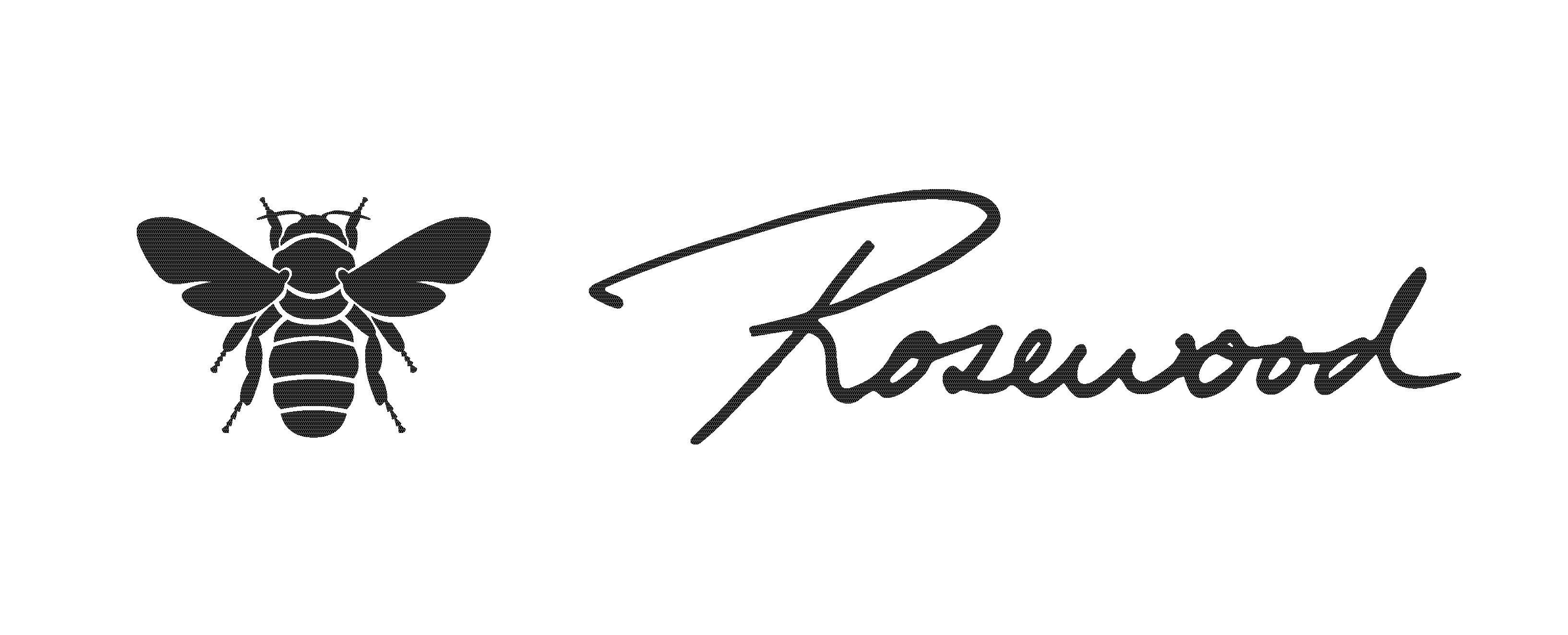
Rosewood Winery & Meadery
Niagara Escarpment, Canada

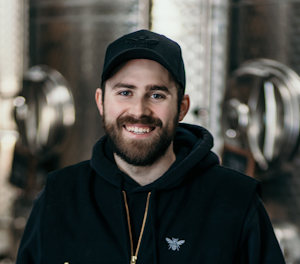
About Rosewood Winery & Meadery
Rosewood Estates Winery & Meadery is a family owned and operated winery nestled on the Beamsville Bench. Renowned for crafting elegant 100% VQA Ontario wines, Rosewood also holds the distinction of being Niagara's original meadery, boasting a legacy of over 90 years in multi-generational beekeeping.
Our focus is simple. Craft honest low-intervention wine, innovative mead, and local honey that reflect their individuality as artifacts of the Niagara Region. By capturing the expression of each vintage, we allow the wine to tell its own story.
Representative Biography
Doug Mackenzie, Assistant Winemaker
Doug discovered his passion for wine at an early age. With the combination of his farming background and love of science, it became a clear choice to pursue a career in winemaking and began this journey at the Food and Wine institute at Niagara College.
A firm believer in Ontario wines, Doug sought out to chase every opportunity the grape growing region could offer. From managing individual vineyards, to producing wine at several large wineries in Niagara, Doug has gained invaluable cool climate experience and knowledge.
Doug began at Rosewood in 2021 and has offered valuable perspectives and insights benefitting the winery. Doug shares the same winemaking philosophy with the rest of the team which makes Rosewood unique; premium, vintage specific story driven wines that celebrate the place and people that grow them.
Photo credit: Rob Anzit Photography
Why We're Cool
Our estate Renaceau Vineyard, located on Beamsville Bench, is in very close proximity to Lake Ontario. During the spring, the winds from the lake impede rapid ripening and bud development encouraging natural acidity retention and nuanced phenolic ripeness in the finished wines.
Oppositely, in winter, the lake's warmed winds discourage cold air from settling on the vineyard, ideally preventing frost or winter damage encouraging healthy bud survival rates.
The topography of our vineyard ensures continuous air circulation, thanks to the lake, contributing to temperature moderation within the vineyard. The enriched soil and high natural organic matter within a blend of clay and limestone, imparts a natural complexity and expression.
In the cellar, the must is not adjusted in any way prior to fermentation. This is only achieved after extensive hand sorting both in the vineyard and crushpad, selecting only desirable
clusters. Following alcoholic fermentation, in both large and small format neutral French oak, our Chardonnay is allowed to mature without additions for up to 24 months prior to bottling without any final adjustments, fining or filtration. Selective and reserved use of battonage is practiced during this elevation process.
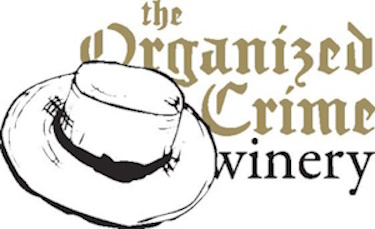
The Organized Crime Winery
Beamsville Bench, Canada

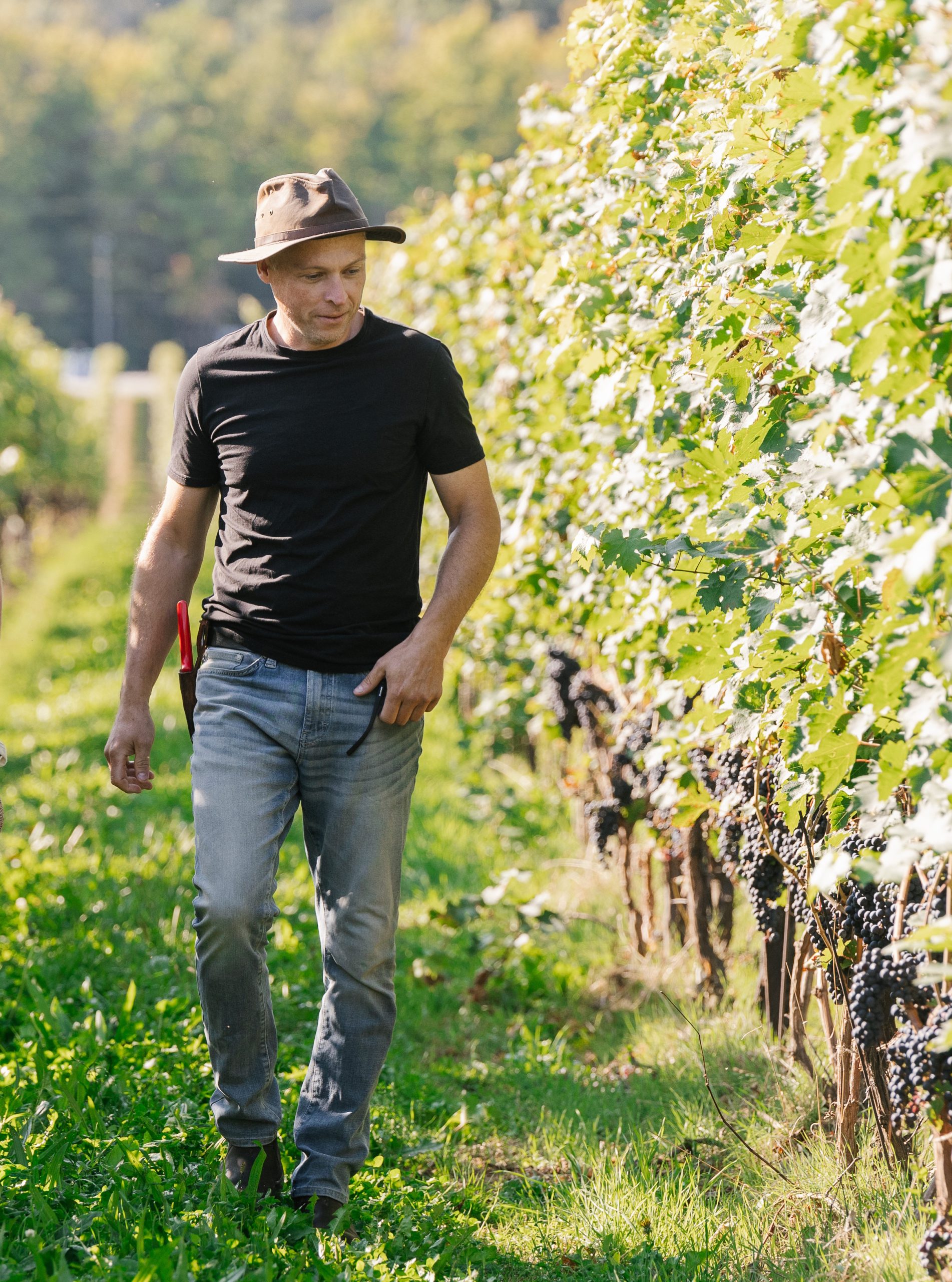
About The Organized Crime Winery
The Organized Crime Winery is a small family-owned estate winery located on the upper slopes of the Niagara Escarpment in the Beamsville Bench sub-appellation. Founded by Jan and Krystyna Tarasewicz in 2006, it is now run by Ania de Duleba and Edward Zaski, and winemaker Greg Yemen.
Our 40 acre property is planted with 25 acres of vinifera vines, with the rest of the land consisting of woodlands, ponds, streams and naturalized areas. Our vines are farmed in a thoughtful manner using best-practice viticulture with the health of the whole vineyard in mind. We have adopted a ‘no till’ policy in our rows, and this approach has allowed for a healthier and more balanced ecosystem, with the native flora and fauna thriving alongside our vines. In the winery our wines are treated with the same respect, allowing the variety, vintage and vineyard site to express themselves clearly. While respecting classic winemaking techniques, we are never afraid to experiment and push forward. This approach has led to The Organized Crime Winery consistently placing in the “Top 10 Small Wineries in Canada” at the National Wine Awards of Canada.
Representative Biography
Greg Yemen, Winemaker
A lifetime ago while living on Vancouver Island working as a finishing carpenter, our winemaker Greg Yemen caught the wine bug many have fallen victim to. Upon returning to Ontario with his wife, Greg enrolled in the Niagara College Winery Program and gained employment at a small family-owned winery in Vineland.
After working through a number of Niagara vineyards and wineries, Greg joined The Organized Crime Winery team in 2014, and took over as winemaker in 2016. What makes his role unique, is that alongside winery owners Ania de Duleba and Edward Zaski, Greg farms all the grapes that he uses to make our wines. You are just as likely to find him in the cellar as you are to find him on the tractor in the vineyard.
Greg’s winemaking philosophy is not bound by any one ideology, but rather each vintage is approached with an open mind, and the desire to make the best wine possible. He has taken a very minimalist approach to our Chardonnay program, and is always looking for elegance and balance in the wines to truly reflect our vineyard site and growing season.
Why We're Cool
We are fortunate to grow our grapes on the cool and breezy upper slope of the Beamsville Bench. This ideal climate in combination with our clay/ limestone glacial till soils, are what allow us to craft elegant and pure vineyard-focused wines. With our long, cool ripening period, we consistently achieve ripeness without elevated sugar levels, while maintaining the benchmark acidity essential for great Chardonnay.
Our grapes are hand-picked on taste before they express an overripe Chardonnay character, and always with acidity in mind. The fruit is gently whole-bunch pressed, typically with no additions and the juice put to barrel with little or no settling. We use puncheon and foudre rather than small barrique, and always allow the juice to ferment and undergo malolactic fermentation using native yeast and bacteria. The wines are left to rest on their ferment lees for 10-14 months and battonage is avoided to retain freshness and purity. Every vineyard and winemaking decision is made with the goal of crafting elegant and complex cool climate Chardonnay.


